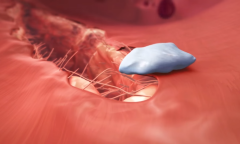By KM Diaz, | May 30, 2017

A new study suggests that fruits and vegetables can reduce blockages in the legs. (YouTube)
A new study suggests that fruits and vegetables can reduce blockages in legs after analyzing the data of 3.7 million people, whose mean age was 64 years old.
The study has found that those who consumed at least three servings of vegetables and fruits daily decreased the risk of peripheral artery disease (PAD) - arteries in arms, head, stomach, and most commonly the legs, narrows because of the build up of plaque.
Like Us on Facebook
Dr. Sean Heffron, the lead author of the research and an instructor at New York University School of Medicine, said that the study provides new evidence about the importance of vegetables and fruits in the diet.
In the study, participants across the U.S. had medical tests measuring their blood pressure in the forearm and ankle, and they also completed questionnaires. Approximately 29.2 percent of participants consumed three or more servings of produce daily and 6 percent had PAD.
The authors explained in Sci News that the overall fruit and vegetable intake of Americans remain low. Younger black men are the least to consume three or more servings of vegetables and fruits daily, while older white women tend to eat three or more recommended servings of vegetables and fruits daily.
The common symptom of PAD includes cramps or pain on hips or legs, according to American Heart Association. For men, some of the typical symptoms are wounds on the feet that don't heal quickly, leg pain, decreased temperature in feet or legs, delayed hair or nail growth, and erectile dysfunction. The condition often left untreated as it was not easily recognized at first and leads to complications such gangrene, and amputation for extreme cases.
Moreover, the condition appears with an elevated risk of certain coronary artery disease, including strokes or heart attacks. There are also certain factors that could increase the chance of developing PAD, like obesity, diabetes, cholesterol, high blood pressure, and history of heart disease in the family.
-
Use of Coronavirus Pandemic Drones Raises Privacy Concerns: Drones Spread Fear, Local Officials Say

-
Coronavirus Hampers The Delivery Of Lockheed Martin F-35 Stealth Fighters For 2020

-
Instagram Speeds Up Plans to Add Account Memorialization Feature Due to COVID-19 Deaths

-
NASA: Perseverance Plans to Bring 'Mars Rock' to Earth in 2031

-
600 Dead And 3,000 In The Hospital as Iranians Believed Drinking High-Concentrations of Alcohol Can Cure The Coronavirus

-
600 Dead And 3,000 In The Hospital as Iranians Believed Drinking High-Concentrations of Alcohol Can Cure The Coronavirus

-
COVID-19: Doctors, Nurses Use Virtual Reality to Learn New Skills in Treating Coronavirus Patients













